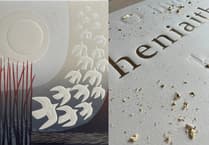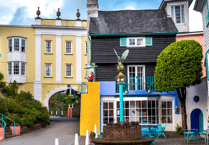Discover the wonders of north Wales’ marine environment at Storiel.
From the amazing shark and rockpool species, to life beneath the waves in a seagrass meadow, the Living Seas exhibition at the Bangor venue will take you on a journey into our seas, across our beaches and along our coastlines.
The exhibition will delve into the impact we have on our natural environment and hunt for the marine treasures which can wash up onto our shores.
See examples of shells, mermaid’s purses (shark eggcases) and interesting shoreline discoveries, methods of planting and growing seagrass, and marine ‘treasures’ such as sea beans and Lego lost at sea.
On certain days members of the North Wales Wildlife Trust team will be available to lead you around the exhibition and to chat about their work in the marine environment of north Wales.
If you would like to arrange a group visit to the exhibition, contact Reece Halstead, Living Seas engagement officer, North Wales Wildlife Trust, at reece.halstead@northwaleswildlifetrust.org.uk, or on 07375 995023
In addition to arranging a group visit you can meet the North Wales Wildlife Trust team in Storiel on Saturday, 13 January (1pm to 4pm) and on Saturday, 27 January (11am to 1pm) there will be an online livestream event from Storiel.
Complementing the Living Seas exhibition and displayed in a special showcase in Storiel’s reception area are a selection of marine specimens from the Brambell Museum, School of Environmental and Natural Sciences, Bangor University.
This presentation, Ocean Life Odyssey, includes a seal pup and penguin, skulls of whales and dolphin, a shark’s jaw and megalodon tooth, preserved specimens, shells and coral.
The ocean is where all life on Earth first began at least 3.5 billion years ago.
It wasn’t until the Cambrian explosion between 541 and 530 million years ago that the first complex multicellular animals, including vertebrates, appeared in the fossil record.
Since then, these lineages, including invertebrates, mammals, birds and of course, fish, have continued to evolve and thrive in or around our Earth’s oceans.
The exhibition is on until 3 February.




-the-UKs-leading-biennial-exhibition.png?width=209&height=140&crop=209:145,smart&quality=75)